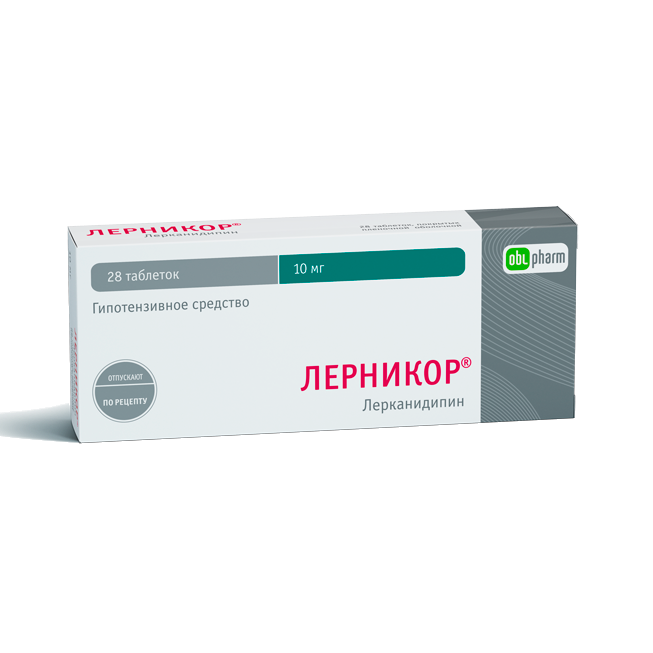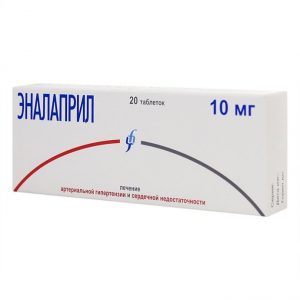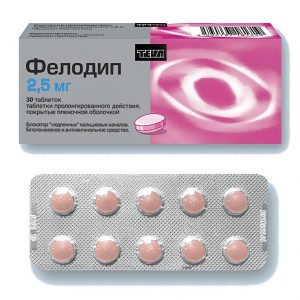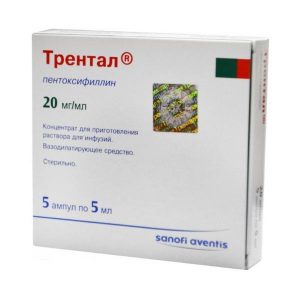Description
Pharmacological action
Lercanidipine is a selective blocker of slow calcium channels, a derivative of 1,4-dihydropyridine, inhibits the transmembrane flow of calcium ions into vascular smooth muscle cells.
Lercanidipine is a racemic mixture of (+) – R – and (-) S – enantiomers. The antihypertensive effect of lercanidipine is primarily due to the S-enantiomer.
The mechanism of the antihypertensive effect of lercanidipine is due to the direct relaxing effect on vascular smooth muscle cells, resulting in a decrease in total peripheral resistance. Despite the relatively short half-life from plasma, lercanidipine has a prolonged antihypertensive effect due to the high coefficient of membrane distribution.
Due to its high vascular selectivity, it has no negative inotropic effect. Acute arterial hypotension with reflex tachycardia rarely occurs due to the gradual development of vasodilation with lercanidipine.
Lercanidipine is metabolically neutral and does not significantly affect the serum lipoproteins and apolipoproteins, and also does not change the lipid profile in patients with arterial hypertension.
Indications
Arterial hypertension 1-2 degrees.
Contraindications
hypersensitivity to lercanidipine, other derivatives of the dihydropyridine series or any component of the drug
untreated chronic heart failure
unstable angina pectoris
severe left ventricular outflow tract sr CC less than 30 ml / min)
simultaneous use with potent inhibitors of CYP3A4 (ketoconazole, itraconazole, ritromitsin, ritonavir, troleandomycin)
simultaneous application of cyclosporin
simultaneous with grapefruit juice
lactose intolerance lactase deficiency, glucose-galactose malabsorption syndrome
pregnancy
period of breastfeeding
use in women of childbearing age who do not use reliable methods of contraception
age up to 18 years (efficacy and safety have not been studied).
Precautions: renal failure (CC more than 30 ml / min) and / or liver failure of mild to moderate severity, advanced age, sinus node weakness syndrome (without pacemaker), coronary heart disease, left ventricular dysfunction.
Directions for use
Inside, at least 15 minutes before meals, preferably in the morning, without chewing, with plenty of water.
The recommended dose of the drug is 10 mg 1 time / day. Depending on the individual tolerance of the drug by the patient, the dose may be increased to 20 mg. If necessary, an increase in the daily dose to 20 mg is carried out 2 weeks after the start of the drug.
The therapeutic dose is selected gradually, because maximum antihypertensive effect develops approximately 2 weeks after the start of the drug.
It is unlikely that the effectiveness of the drug will increase with increasing doses of more than 20 mg / day, at the same time, the risk of side effects increases.
Pharmacokinetic profile and clinical trial data show that elderly patients do not require dose adjustment of lercanidipine. However, caution should be exercised at the initial stage of treatment in this group of patients.
In the presence of renal failure (CC more than 30 ml / min) or liver failure of mild or moderate severity, the initial dose is 10 mg, then with caution increase the dose to 20 mg / day. The antihypertensive effect may be enhanced in patients with mild or moderate liver failure, and dose adjustment (reduction) may be required.
Special instructions
Special care should be taken when prescribing lercanidipine to patients with sinus node syndrome (without a pacemaker).
even though Since studies with hemodynamic control did not reveal a deterioration in ventricular function when taking lercanidipine, caution should be exercised when prescribing lercanidipine to patients with left ventricular dysfunction. It has been suggested that taking certain dihydropyridines may be associated with a risk of more frequent angina attacks in patients with coronary heart disease. Therefore, in such patients, lercanidipine therapy should be carried out with extreme caution.
Influence on the ability to drive vehicles and control mechanisms
Since dizziness, asthenia, increased fatigue and, in rare cases, drowsiness may occur during treatment with the drug, patients should use special care to drive vehicles and engage in other potentially dangerous activities, requiring high speed of psychomotor reactions.
Composition
Tablets, film-coated yellow, round, biconvex.
1 tab.
lercanidipine hydrochloride 10 mg
Excipients:
microcrystalline cellulose – 39 mg,
lactose monohydrate – 30 mg,
carboxymethyl starch sodium (sodium starch glycolate) – 15.5 mg,
1 mg potassium starch – 4.5 mg
Shell composition:
Opadry II 85F38107 yellow (polyvinyl alcohol – 1.2 mg, titanium dioxide – 0.6684 mg, macrogol (polyethylene glycol) – 0.606 mg, talc – 0.444 mg, aluminum varnish based on the quinoline yellow dye – 0. 0807 mg, iron oxide red – 0.0009 mg).
Overdose
Symptoms: presumably, in case of an overdose of lercanidipine, symptoms will be observed, similar to those with an overdose of other derivatives of dihydropyridine – peripheral vasodilation with a marked decrease in blood pressure and reflex tachycardia.
Treatment: symptomatic. In the case of a marked decrease in blood pressure, loss of consciousness, cardiovascular therapy is indicated, with bradycardia, intravenous administration of atropine.
There is evidence of 3 cases of overdose when taking lercanidipine in doses of 150 mg, 280 mg and 800 mg for the purpose of suicide.
When dosing 150 mg of lercanidipine + alcohol (unspecified amount), drowsiness was observed. Treatment: gastric lavage, intake of activated carbon.
In the case of taking 280 mg of lercanidipine + 5.6 mg of moxonidine, the following symptoms were observed: cardiogenic shock, severe myocardial ischemia, mild renal failure. Treatment: cardiac glycosides, diuretics (furosemide), high doses of catecholamines, plasma substitutes.
In the case of taking 800 mg of lercanidipine, nausea and a marked decrease in blood pressure were observed. Treatment: taking activated charcoal and a laxative, intravenously – dopamine.
In all cases of overdose, all patients remained alive. Information on the effectiveness of dialysis for lercanidipine is not available. It is most likely that due to the high association of lercanidipine with blood plasma proteins, dialysis may be ineffective.
Storage conditions
The drug should be stored out of the reach of children at a temperature not exceeding 25 ° C.
Expiration
3 years. Do not use after the expiration date indicated on the package.
Terms and conditions
prescription
dosage form
tablets




